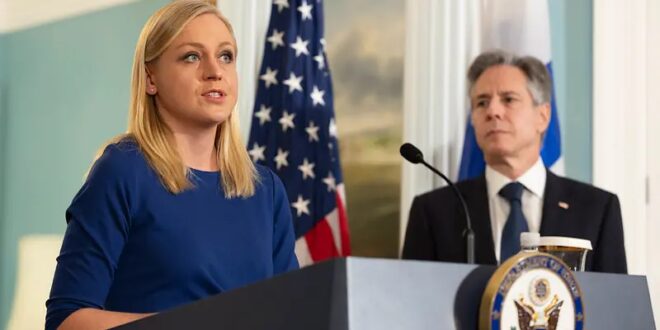The United States and Finland formalized a defense cooperation agreement (DCA) on December 18th, marking a pivotal development in their military collaboration. The accord entails Helsinki’s commitment to facilitating access to its military bases for U.S. forces, thereby fostering joint training initiatives and implementing various cooperative measures.
U.S. Secretary of State Antony Blinken, speaking during the signing ceremony at the U.S. State Department, underscored the prospective efficacy of the agreement, emphasizing its potential to enhance operational synergies between the U.S. and Finnish armed forces. The pact, once operational, is anticipated to provide increased training opportunities for troops and reinforce NATO’s overall interoperability. Moreover, through this, the Finnish defense ministry has granted the United States access to 15 military bases in NATO’s most recent member.
On December 6, the United States entered into a comparable agreement with Sweden, affording Washington access to 17 military bases. This Defense Cooperation Agreement (DCA) represents a legally binding international accord, serving as a contemporary framework for collaboration between Finland and the United States. Spanning a distance of 1,340 kilometers (832 miles), its border with Russia functions as the external border of the European Union and constitutes the northeastern flank of NATO. The DCA’s stipulations will predominantly draw from the NATO Status of Forces Agreement (NATO SOFA), elucidating the guidelines for cooperation and permitting the enhancement of collaboration across various security scenarios.
Numerous other NATO member states have established analogous bilateral agreements with the United States. Among the Nordic and Baltic nations, Norway, Estonia, Latvia, and Lithuania have existing agreements, while Denmark is presently engaged in negotiation efforts. The evolving security landscape in Finland and Europe, particularly in the aftermath of the Ukraine War, underscores the heightened significance of fostering bilateral cooperation adaptable to diverse security contexts.
Finland, having officially joined NATO in April, has a longstanding history of security collaboration with the United States, particularly in counter-terrorism efforts over the past three decades. Blinken highlighted the positive impact of such cooperation on Finland’s defense capabilities, exemplified by the recent acquisition of F-35 fighter jets from the United States. Finnish Foreign Minister Elina Valtonen, also present at the signing ceremony, characterized the agreement as a significant milestone in bilateral relations, emphasizing its role in strengthening the security landscape in the Nordic and Baltic regions.
Defense Minister Antti Hakkanen echoed these sentiments, regarding the DCA as a robust testament to the United States’ commitment to the defense of Finland and the broader Northern European context. Nevertheless, Hakkanen clarified that Finland does not rely solely on the United States for its defense and emphasized the nation’s ongoing commitment to investing in its defense capabilities. He stated that while the agreement signifies an augmentation of collaborative capabilities across military, security, and defense domains, Finland remains proactive in shouldering its defense responsibilities independently.
The DCA, as outlined in the text published by the Finnish government, encompasses provisions granting U.S. military personnel access to a spectrum of Finnish military facilities, including air force bases, naval bases, garrison areas, training zones, storage facilities, and Border Guard barracks. Furthermore, the agreement allows for the prepositioning of defense equipment, supplies, and material within Finland’s territory, along with facilitating the entry and movement of U.S. aircraft, vessels, and vehicles. Given the legislative nature of certain provisions within the DCA, its ultimate implementation is contingent upon approval by Finland’s Parliament.
The initiation of negotiations on the DCA occurred in August 2022, with the process concluding in October 2023. This diplomatic development aligns with broader U.S. efforts to fortify defense cooperation with Nordic countries, including Norway, Sweden, Denmark, and Iceland, following the Russia-Ukraine conflict of February 2022. Blinken highlighted parallel agreements with Norway and Sweden, emphasizing the imminent signing of a comparable pact with Denmark later in the week.
There will be impacts.
In portions of the interview with a state television reporter, Russian President Vladimir Putin asserted that the West had effectively brought Finland into NATO. Notably, public sentiment in Finland significantly shifted in favor of NATO membership following the Ukraine war. Russian President Vladimir Putin issued a cautionary statement about unspecified “problems” with Finland and disclosed his directive to establish a new military district in regions contiguous to the Nordic nation.
Putin remarked on the absence of past disputes, including mid-20th-century territorial issues, with Finland. He stated, “All disputes, including territorial ones from the mid-20th century, have long been resolved. There were no issues at that time. However, they will arise now, as we are establishing the Leningrad Military District and consolidating specific military units there.” In recent weeks, Finland has completely closed its borders with Russia due to a surge of immigrants, primarily from the Middle East, attempting to cross, with many seeking asylum.
The recent developments in military budget allocations among key nations, particularly in Finland and Sweden, signal a notable upward trend in defense spending. Finland’s decision to increase its defense budget for 2024 to EUR6.19 billion (USD6.58 billion) represents a substantial rise, consolidating the significant jump observed in 2020 when spending surged by approximately 40%. This current figure stands at 2.3% of GDP, demonstrating a consistent upward trajectory from 1.99% in 2021 and 1.53% in 2020. Similarly, Sweden, awaiting Turkiye’s and Hungary’s sign-off to join NATO, has earmarked SEK126 billion (USD11.83 billion) for its 2024 military budget, reflecting a substantial 28% increase.
In contrast, NATO members, including the United States, already allocate substantial amounts to defense. It is projected that these nations will have allocated a combined USD1.26 trillion in 2023, according to NATO’s accounting. Washington’s budget alone represents a dominant 68% of the total, while Europe and Canada account for the remaining 32%. This underscores the considerable financial commitment of NATO members to bolstering their defense capabilities.
Conversely, Russia, while expressing concerns about its military spending plans in recent years, has announced an increase in defense spending to RUB10.8 trillion (USD140.4 billion) in 2024, up from RUB6.41 trillion (USD85.8 billion) in 2023. This upward trajectory, despite earlier plans, underscores Russia’s prioritization of military expenditure in its national budget.
However, the substantial rise in military budgets across these nations raises concerns about the potential diversion of funds from humanitarian and development initiatives. The current downturn in the world economy further complicates this scenario, as increased allocations to defense may limit available resources for critical areas such as humanitarian aid, international development, and social welfare programs. The allocation of significant portions of national budgets to military endeavors could lead to a reallocation of funds away from addressing pressing global challenges, exacerbating the strain on already limited resources dedicated to non-military priorities.
The concurrent escalation of military budgets in various nations, particularly against the backdrop of global economic challenges, underscores the need for careful consideration of resource allocation. Striking a balance between national security imperatives and addressing broader societal needs will be crucial in navigating the evolving dynamics of international relations and safeguarding the well-being of populations amid economic uncertainties.
The formalization of the Defense Cooperation Agreement between the United States and Finland, along with Finland’s NATO membership, has far-reaching implications on military collaboration, regional security, and the geopolitical dynamics on the Russo-Finnish border. The developments underscore the evolving nature of alliances and the complex interplay of geopolitics in the Northern European context.
 Eurasia Press & News
Eurasia Press & News



